10g
Showing 1201–1250 of 1404 results
-

N-Cbz-L-aspartic Acid
$62.96 Add to cart View Product DetailsMolecular Formula : C12H13NO6
-

N-Cbz-L-leucine
$67.28 Add to cart View Product DetailsMolecular Formula : C14 H19 N O4
-

N-CBZ-L-phenylalanine p-Nitrophenyl Ester
$689.62 Add to cart View Product DetailsN-CBZ-L-phenylalanine p-Nitrophenyl Ester
-

N-Methoxy-N-methylacetamide
$58.01 Add to cart View Product DetailsN-Methoxy-N-methylacetamide
-

N-Methylnicotinamide
$103.44 Add to cart View Product DetailsN-Methylnicotinamide
-

N-tert-Boc-D-alanine
$100.91 Add to cart View Product DetailsMolecular Formula : C8H15NO4
-

N-tert-Butoxycarbonyl-2-piperidinone
$111.26 Add to cart View Product DetailsMolecular Formula : C10H17NO3
-

N-tert-Butoxycarbonylcephalexin
$1,537.84 Add to cart View Product DetailsMolecular Formula : C21H25N3O6S
-

N-tert-Butyl-1,1-dimethylpropargylamine
$313.95 Add to cart View Product DetailsMolecular Formula : C9H17N
-

N-tert-Butyl-4-aminobenzenesulfonamide
$292.39 Add to cart View Product DetailsMolecular Formula : C10H16N2O2S
-

N-tert-Butyloxycarbonyl-L-aspartic Acid b-tert-Butyl Ester
$384.68 Add to cart View Product DetailsMolecular Formula : C13H23NO6
-
![N-Vanillylnonanamide, [=Capsaicin (Synthetic)]](https://advatechgroup.com/wp-content/plugins/woocommerce/assets/images/xplaceholder.webp.pagespeed.ic.ANHCL-f_RA.webp)
N-Vanillylnonanamide, [=Capsaicin (Synthetic)]
$203.11 Add to cart View Product DetailsN-Vanillylnonanamide, [=Capsaicin (Synthetic)]
-

N,N-bis-(Carboxymethyl)-L-glutamic Acid Tetrasodiumn Salt (40% in water)
$84.53 Add to cart View Product DetailsMolecular Formula : C9H9NNa4O8
-
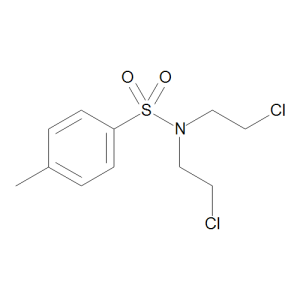
N,N-Bis(2-chloroethyl)-p-toluenesulfonamide, Technical Grade 90%
$71.59 Add to cart View Product DetailsMolecular Formula : C11 H15 Cl2 N O2 S
-
![N,N-Bis[3-D-gluconamidopropyl]cholamide](https://advatechgroup.com/wp-content/uploads/sys-masterimageshcche010631945715742B438501-300x155.png)
N,N-Bis[3-D-gluconamidopropyl]cholamide
$607.20 Add to cart View Product DetailsMolecular Formula : C42 H75 N3 O16
-
![N,N-Bis[3-D-gluconamidopropyl]cholamide (Ultra Pure)](https://advatechgroup.com/wp-content/uploads/sys-masterimageshcche010631945715742B438501-300x155.png)
N,N-Bis[3-D-gluconamidopropyl]cholamide (Ultra Pure)
$1,874.21 Add to cart View Product DetailsMolecular Formula : C42 H75 N3 O16
-

N,N-Dimethylformamide-d7, 99.5 Atom Percent D
$1,125.93 Add to cart View Product DetailsN,N-Dimethylformamide-d7, 99.5 Atom Percent D
-

N,N’-Bis(salicylidene)ethylenediamine
$83.66 Add to cart View Product DetailsMolecular Formula : C16H16N2O2
-
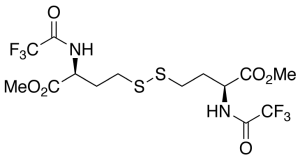
N,N’-Bis(trifluoroacetyl)-L-homocystine Dimethyl Ester
$1,154.03 Add to cart View Product DetailsMolecular Formula : C14H18F6N2O6S2
-
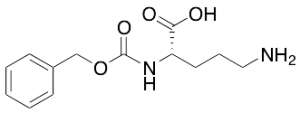
N2-Benzyloxycarbonyl-L-ornithine
$176.81 Add to cart View Product DetailsMolecular Formula : C13H18N2O4
-
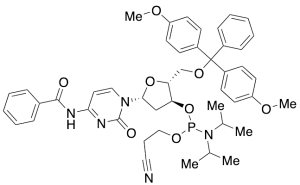
N4-Benzoyl-2’-deoxy-5’-O-DMT-cytidine 3’-CE Phosphoramidite
$422.63 Add to cart View Product DetailsMolecular Formula : C46H52N5O8P
-
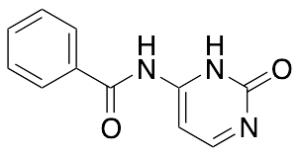
N4-Benzoylcytosine
$111.26 Add to cart View Product DetailsMolecular Formula : C11H9N3O2
-

Na-Boc-D-histidine
$130.24 Add to cart View Product DetailsMolecular Formula : C11H17N3O4
-
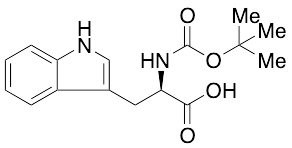
NAlpha-Boc-D-tryptophan
$132.83 Add to cart View Product DetailsMolecular Formula : C16H20N2O4
-

NAlpha-Boc-L-histidine
$122.48 Add to cart View Product DetailsMolecular Formula : C11H17N3O4
-

NAlpha-Carbobenzyloxy-Beta-amino-L-alanine
$188.03 Add to cart View Product DetailsMolecular Formula : C11 H14 N2 O4
-
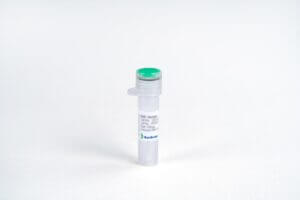
NAP-2/CXCL7, Human
$163.88 Add to cart View Product DetailsNeutrophil Activating Peptide 2 (NAP-2) is proteolytically processed carboxyl-terminal fragments of platelet basic protein (PBP) which is found in the alpha-granules of human platelets. NAP-2 is a member of the CXC chemokines. Similar to other ELR domain containing CXC chemokines such as IL-8 and the GRO proteins, NAP-2 has been shown to bind CXCR-2 and to chemoattract and activate neutrophils. Although CTAP-III, β-TG and PBP represent amino-terminal extended variants of NAP-2 and possess the same CXC chemokine domains, these proteins do not exhibit NAP-2 activity. Recently, it has been shown that the additional amino-terminal residues of CTAP-III masks the critical ELR receptor binding domain that is exposed on NAP-2 and may account for lack of NAP-2 activity.
-

Neutral Red
$70.61 Add to cart View Product DetailsNeutral Red
-

Neutral Red, Reagent, ACS
$102.53 Add to cart View Product DetailsNeutral Red, Reagent, ACS
-

NGF R, Human
$51.75 Add to cart View Product DetailsNGF Receptor, also known as Gp80-LNGFR, p75 ICD, CD271 and TNFRSF16, is a type I transmembrane protein belonging to the TNF receptor family. It is expressed by both neuronal and non-neuronal cells. Signaling through NGF Receptor has been shown to regulate gene expression, cell migration and death. A truncated NGF Receptor containing only the extracellular domain has been detected in plasma, amniotic fluid and urine, and acts as a potent NGF antagonist.
-

Nifedipine
$89.57 Add to cart View Product DetailsNifedipine
-

Nile Blue A
$159.14 Add to cart View Product DetailsNile Blue A
-

Nizatidine
$559.61 Add to cart View Product DetailsNizatidine
-

Noggin, Human(CHO-expressed)
$68.14 Add to cart View Product DetailsNoggin, also known as NOG, is a homodimeric glycoprotein that bindsto and modulates the activity of TGF-beta family ligands. It is expressed in condensing cartilage and immature chondrocytes. Noggin antagonizes bone morphogenetic protein (BMP) activities by blocking epitopes on BMPs needed for binding to their receptors. Noggin has been shown to be involved in many developmental processes, such as neural tube formation and joint formation. During development, Noggin diffuses through extracellular matrices and forms morphogenic gradients, regulating cellular responses dependent on the local concentration of the signaling molecule.
-

NT-4, Mouse
$86.25 Add to cart View Product DetailsNeurotrophin-4 (NT-4), also known as NT-5, is a neurotrophic factor structurally related to β-NGF, BDNF, and NT-3. Human NT-4 shares 48 – 52% aa sequence identity with human β-NGF, BDNF, and NT-3. Neurotrophins have six conserved cysteine residues that are involved in the formation of three disulfide bonds. NT-4 is expressed highest levels in prostate, lower levels in thymus, placenta, and skeletal muscle. NT-4 binds and induces receptor dimerization and activation of TrkB. NT-4 can signal through TrkB receptors and promotes the survival of peripheral sensory sympathetic neurons.
-

Nuclear Fast Red
$412.55 Add to cart View Product DetailsNuclear Fast Red
-
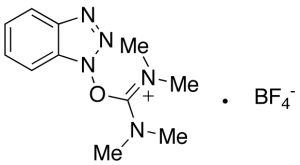
O-(Benzotriazol-1-yl)-N,N,N’,N’-tetramethyluronium Tetrafluoroborate
$100.91 Add to cart View Product DetailsMolecular Formula : C11H16BF4N5O
-
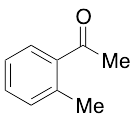
o-Acetyltoluene
$122.48 Add to cart View Product DetailsMolecular Formula : C9H10O
-

O-Benzyl-L-tyrosine Benzyl Ester Hydrochloride
$214.76 Add to cart View Product DetailsMolecular Formula : C23 H23 N O3 . H Cl
-

O-Benzylhydroxylamine Hydrochloride
$78.49 Add to cart View Product DetailsMolecular Formula : C7 H9 N O . HCl
-

o-Carbomethoxybenzyl Sulfonamide
$78.49 Add to cart View Product DetailsMolecular Formula : C9H11NO4S
-

o-Chloranil
$182.85 Add to cart View Product DetailsMolecular Formula : C6Cl4O2
-

o-tert-Butyl-p-cresol
$176.81 Add to cart View Product DetailsMolecular Formula : C11 H16 O
-

Octafluorocyclopentene
$287.67 Add to cart View Product DetailsOctafluorocyclopentene
-
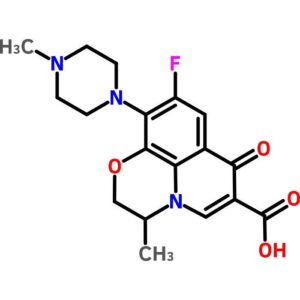
Ofloxacin
$377.99 Add to cart View Product DetailsOfloxacin
-

Orotic Acid Sodium Salt
$228.78 Add to cart View Product DetailsOrotic Acid Sodium Salt
-

OSM (209aa), Human
$86.25 Add to cart View Product DetailsOncostatin M (OSM) is a multifunctional cytokine, and belongs to Interleukin-6 (IL-6) subfamily, which also includes IL-11, leukemia inhibitory factor (LIF), ciliary neurotropic factor, cardiotrophin-1, and novel neurotropin-1. In vivo, OSM is secreted from activated T cells, monocytes, neutrophils, and endothelial cells. OSM is related to LIF, and shares a receptor with LIF in human. Human OSM can bind to gp130 and recruit OSM Receptor β or LIF Receptor β to form a ternary complex. OSM stimulates the growth of different types of cells, including megakaryocytes, fibroblasts, vascular endothelial cells, and T cells. OSM inhibits the proliferation of several cancer cell lines, such as solid tissue tumor cells, lung cancer cells, melanoma cells, and breast cancer cells.
-

OSM (227aa), Human
$86.25 Add to cart View Product DetailsOncostatin M (OSM) is a multifunctional cytokine, and belongs to Interleukin-6 (IL-6) subfamily, including IL-11, leukemia inhibitory factor (LIF), ciliary neurotropic factor, cardiotrophin-1, and novel neurotropin-1. In vivo, OSM is secreted from activated T cells, monocytes, neutrophils, and endothelial cells. OSM is related to LIF, and share a receptor with LIF in human. Human OSM can bind to gp130 and recruit OSM Receptor β or LIF Receptor β to form a ternary complex. OSM stimulates the growth of different types of cells, including megakaryocytes, fibroblasts, vascular endothelial cells, and T cells. On the other hand, OSM inhibits the proliferation of several cancer cell lines, such as solid tissue tumor cells, lung cancer cells, melanoma cells, and breast cancer cells.
-

OSM, Mouse
$86.25 Add to cart View Product DetailsOncostatin M (OSM) is a multifunctional cytokine, and belongs to Interleukin-6 (IL-6) subfamily, which also includes IL-11, leukemia inhibitory factor (LIF), ciliary neurotropic factor, cardiotrophin-1, and novel neurotropin-1. In vivo, OSM is secreted from activated T cells, monocytes, neutrophils, and endothelial cells. OSM is related to LIF, and shares a receptor with LIF in human. Human OSM can bind to gp130 and recruit OSM Receptor β or LIF Receptor β to form a ternary complex. OSM stimulates the growth of different types of cells, including megakaryocytes, fibroblasts, vascular endothelial cells, and T cells. OSM inhibits the proliferation of several cancer cell lines, such as solid tissue tumor cells, lung cancer cells, melanoma cells, and breast cancer cells.
-

OSM, Mouse(HEK 293-expressed)
$86.25 Add to cart View Product DetailsOncostatin M (OSM) is a multifunctional cytokine, and belongs to Interleukin-6 (IL-6) subfamily, which also includes IL-11, leukemia inhibitory factor (LIF), ciliary neurotropic factor, cardiotrophin-1, and novel neurotropin-1. In vivo, OSM is secreted from activated T cells, monocytes, neutrophils, and endothelial cells. OSM is related to LIF, and shares a receptor with LIF in human. Human OSM can bind to gp130 and recruit OSM Receptor β or LIF Receptor β to form a ternary complex. OSM stimulates the growth of different types of cells, including megakaryocytes, fibroblasts, vascular endothelial cells, and T cells. OSM inhibits the proliferation of several cancer cell lines, such as solid tissue tumor cells, lung cancer cells, melanoma cells, and breast cancer cells.






